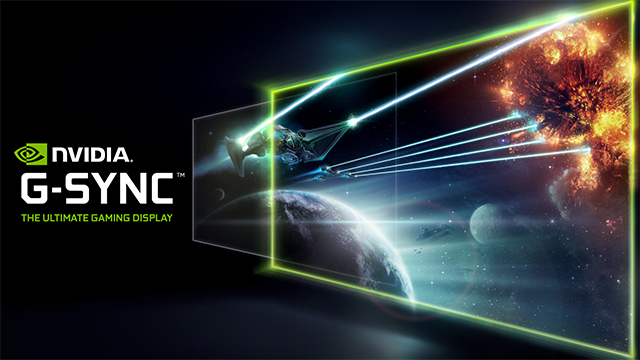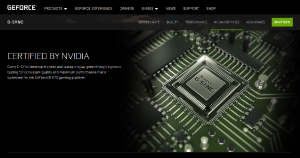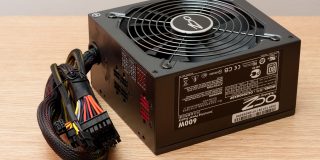Is G-SYNC Worth It?

When hardware juggernaut Nvidia introduced its proprietary G-SYNC technology to the public in 2013, it made the bold claim that this would provide a revolutionary solution to the age-old problems of screen tearing and stuttering. Once G-SYNC enabled monitors hit the market in the following year, it turned out that Nvidia was right. G-SYNC does live up to its lofty promise and offers an innovative solution to an issue that’s been plaguing gamers basically ever since we moved on from text-based graphics.
Therefore, if you want the shortest possible answer to the question eponymous to this article, it would be yes. G-SYNC is worth it. However, if you bear with us for a bit longer, we’ll explain the underlying issue addressed by this technology and offer more details as to why we believe it is a worthy investment.

The Problem
G-SYNC was designed as the next evolutionary step of the existing VSync technology and they both address the same problem – the fact that monitors have a fixed refresh rate while the output speed of GPUs (graphics processing units) is variable. The root of this problem can be traced to as far back as the first commercially available TV sets.
Namely, early TVs were built with a refresh rate designed to match the power grid, therefore 60 Hz became the norm. When it was time to develop the first dedicated PC monitors for the open market, this CRT (cathode ray tube) technology was already well established so it was adapted for this new purpose. That is why 60 Hz monitors are the standard even to this day, despite the fact that we’ve moved on from CRTs to flat panels. There are monitors with higher refresh rates out there, going up to as high as 240 Hz, but the underlying principle is the same.
So let’s assume you have a standard 60 Hz computer monitor. This means it will refresh the image you see 60 times every second. However, your GPU may not always output 60 frames per second – this depends on the complexity of the scene it needs to render. If these two processes are not aligned, graphical problems occur.
If your graphics card sends a new image in the middle of your monitor’s refresh cycle, you get screen tearing. The graphics you see on the monitor will basically contain two images, a part of the current frame and a part of the previous one, with a strikingly noticeable “tear line” between them. You’ll see the same objects in slightly different positions on the screen, almost like someone tore up your image and didn’t put it back together quite right. It is impossible to ignore and can instantly break your immersion.
VSync
For many years, the only solution to this problem was to turn on VSync. VSync is a software solution which synchronizes these two processes (hence the name) by forcing the GPU to hold up sending screen updates until your monitor begins a new refresh cycle. This does remove screen tearing, but it comes at a price.
The first of the two problems VSync can cause is stuttering. Whenever the performance of your GPU dips below your monitor’s refresh rate, VSync compensates for this by drawing the same frame twice. The viewer perceives this as a stutter and the image on the screen appears very choppy. Not only is this another way to diminish your gaming enjoyment, it is also extremely taxing on the eyes.
The other issue is input lag, a noticeable delay between the moment you issue a command via a button press and the respective action taking place onscreen. Many players, particularly those competing in tournaments, find this input lag to be unacceptable and choose to turn off VSync and suffer through the screen tearing just to avoid it.
G-SYNC
This is where Nvidia’s G-SYNC comes into play. It is a hardware solution, a module built into monitors, which solves both problems VSync can cause. You can already guess that it synchronizes the monitor’s refresh rate and the GPU’s output, but it does this in the opposite way compared to VSync. Rather than making the GPU wait on the monitor, G-SYNC forces the display to adapt to the graphics card.
Consequently, it doesn’t matter if your GPU is struggling a bit with a particularly demanding scene or if you have a monstrous gaming rig which pumps out frames like there’s no tomorrow, your graphics card and your monitor will always stay in tune. This makes screen tearing a thing of the past, but without introducing stuttering or lag.

What This Means for You
First and foremost, G-Sync makes for a much more enjoyable gaming experience. Silky smooth graphics allow you to become fully immersed in the game world and lose yourself in the stunning visual spectacles that modern video game engines can produce. Without tearing and stuttering, there are no unwanted distractions. Plus, the fact that your image is stutter-free also means there is less eyestrain.
Secondly, the reduced lag can actually give you a competitive edge. Even if you are just playing online from home, rather than competing in official tournaments, that split-second delay can make a world of difference in fast-paced games.
Finally, by adopting G-SYNC technology, you are future-proofing your computer. A monitor is not something you buy every year and by choosing to go with G-SYNC now, you are ensuring you won’t have to worry about your display for years to come.
In the end, we hope we’ve managed to help you clear up some doubts about G-SYNC and what it actually does. If you are at least halfway serious about playing video games, we believe it is well worth the investment to get a monitor which supports this technology. It is the way of the future and once you experience it firsthand, it will be really difficult, we would even dare say impossible, to go back to the way things were before it.
















